The White Conquest of Nicaragua
 How a White doctor from Tennessee conquered Nicaragua
How a White doctor from Tennessee conquered Nicaragua
by John de Nugent
NICARAGUA in 1982: Squalor. Poverty. Marxist troops from Cuba. The main export is revolution. With the Sandinista victory in 1979, power has shifted from the Latin-White element in the population back to the Mestizo and the Indian. A frowning U.S. secretary of state mutters darkly to reporters that he cannot rule out the prospect that American GIs may soon be fighting and dying in Central American jungles, only seven years after the fall of Saigon, in order to contain another spreading Marxist threat. (ILLUSTRATION: William Walker, like virtually all other Americans of his day, was conscious of the natural inequalities which distinguish the various races of man, and neither he nor his contemporaries in that era before the advent of the Jewish media masters felt any need to deny or make excuses for a self-evident White superiority. Unlike most of the rest, however, Walker felt a responsibility to the future generations of his race, and he acted accordingly.)
It didn’t have to turn out this way. In the 1850s Nicaragua was actually marching toward U.S. statehood. Had the visionary conquest of Nicaragua by William Walker (pictured) and his private army not been sabotaged, that whole fruitful and verdant country might today (perhaps along with the rest of Central America) be teeming with White Americans, the descendants of settlers from the North. The recently surrendered Panama Canal would never have been built, because Nicaragua would have provided a far better location for the canal. And this vital inter-ocean link would be on United States soil, defended by White Americans protecting their own land.
In place of Central America’s perennial instability, sloth, and backwardness — the consequences of a multiracial population base and rampant miscegenation — millions of hard-working Whites could be flourishing.

Though a German Jew and a Yankee railroad magnate were able to thwart Walker’s undertaking, the life of the man from Nashville was neither a failure nor “a tale of sound and fury, signifying nothing.” William Walker, called “the gray-eyed man of destiny” by his contemporaries, truly exemplified that Nordic breed which, said Aristotle, “would prefer short, intense pleasures to long, quiet ones; would choose to live nobly for a year rather than to pass many years of ordinary life; and would rather do one great and noble deed than many small ones.” For Walker, that “one great and noble deed” would be to open up Nicaragua to what he, along with others of the time, called the “Anglo-Saxon” or “blue-eyed” race.
Manifest Destiny
After the 1970s, a decade of unprecedented retreat from strength and confidence, it seems hard for Americans today to imagine the certainty their White ancestors of a little more than a century ago felt that it was their destiny to conquer and settle all of North America — and perhaps even South America too. In fact, the first 140 years of the American Republic saw territorial expansion, whether by sword or by dollar, as the normal state of affairs. From the 1780s, when the 13 former colonies annexed everything east of the Mississippi, until the First World War, when Denmark was pressured to cede the Virgin Islands, American territorial expansion, and with it White population growth, seemed inexorable.
But it was during the 19th century, especially, that men like William Walker could flourish. The United States, with a population under five million in 1800, increased its land area on the North American continent by century’s end from less than 0.9 to more than 3.6 million square miles.
What fueled this gigantic landnama (as the Vikings would have called it) was endemic confidence. We find Thomas Jefferson boldly ushering in the new century with the prediction: “Our rapid multiplication will cover the whole northern, if not also the southern continent.” One writer at mid-century concurred, suggesting that America, with its large White birth rate, was “conquering the New World from its bedchamber.” Others, like Sam Houston, the “father” of Texas, knew that White power grew as much from the barrel of the gun as from the bedchamber. The latter was of the considered opinion that the “Anglo-Saxon race” was destined to seize and people all of North and Central America, right down to the Isthmus of Panama.
How the mighty have fallen! The same Texas which Sam Houston and Davy Crockett secured for the White race is now ordered by a Federal court to feed, clothe, and school the offspring of “Tex-Mex” illegal aliens, who are swarming into the state from Mexico at a rate of more than a million each year.
As the 19th century unfolded, the expanding frontiers made the race question of paramount importance. East of the Mississippi there was the issue of Negro slavery, which eventually tore the Union apart in fratricidal combat. But west of the Mississippi the racial problem had to do with the Indians, a people of Asian origin, and with the Indian-Spanish hybrids called “Mestizos” (or in the American vernacular of the times, “Greasers”).
Except for a few New England intellectuals and divines the bulk of the population had no desire to “civilize” the Indians and Mestizos, and no longing to assimilate them either. Representative Roger Griswold of Connecticut declared unmistakably that the United States had not been “formed for the purpose of distributing its principles and advantages to foreign nations,” but rather “with the sole view of securing these blessings to ourselves and our own posterity.”
An influential book published in 1935, Manifest Destiny, by Alfred Katz Weinberg, explained this racialist attitude, albeit disapprovingly:
“A key was the judgment that democratic institutions function best among a racially homogeneous and generally intelligent population.
“Another reason was the proto-Nietzschean judgment that it is more important to develop ‘the more splendid race’ than to lift up the inferior.
“Still another influence was the aristocratic exclusiveness [of American Whites] which repels untouchables with a noli me tangere. The exclusiveness was not that of an esthete but involved the impatience of the hardy pioneer with the incompetent.”
It was this deep-felt determination not to absorb the incompetent which led the United States to avoid annexing all of Mexico after the fall of Mexico City to U.S. troops in 1848.
In fact, there earlier had been voices opposed to annexing even Louisiana back in 1803 because of New Orleans’ considerable Latin (French and Spanish) population. One U.S. Senator, John Bell of the 32nd Congress — like William Walker a Tennessean — insisted that all future annexations should be pointed north, into Canada. There, he said, we find “bone of our bone,” a kindred White people whose addition would add “strength and vigor to the body politic.”
Mercifully absent from the great annexation debates of the last century was the gospel of “human rights” for our “little brown brothers in Christ.” A distinguished writer for Harper’s, John Burgess, expressed the healthy belief of the times: “The Teutonic [White] nations can never regard the exercise of political power as a right of all men.”
What made Whites like Burgess convinced that non-Whites had forfeited any “rights” to power and land was the essentially unproductive nature of the brown- and red-skinned peoples. James Buchanan, later the 15th President, in a book published in 1824 on Indian history and customs, let a Pawnee Indian chief explain the temperamental difference:
“‘The Great Spirit,’ said the chief during a visit to Washington, ‘made us all. He made my skin red, and yours white. He placed us on this earth and intended that we should live differently from each other.
“‘He made the whites to cultivate the earth, and feed on domestic animals; but he made us redskins to rove through the uncultivated woods and to dress with their skins. He intended that we go to war, to take scalps, to steal horses, and to triumph over our enemies.’”
About the only thing that Whites and Indians could agree on here was the mutual desire to triumph over their enemies. But as for the rest, the White man had not come from Europe to roam the woods and steal horses. Proud scions of the race which built Athens, Rome, London, and Berlin, the Whites had come to work. Like Doctor Faust, the quintessential Homo europaeicus in Goethe’s drama, the European came to North America “ever striving, exerting himself.”
Therefore, the productive land had to be cleared of its unproductive inhabitants. To do this in Nicaragua was the chosen task of William Walker.
William Walker
Walker was born in Nashville, Tennessee, on May 8, 1824, to prosperous, middle-class parents. Though short and slight of build (5´, 5˝, 120 lbs), the blond Southerner had a pair of fixating blue-gray eyes that made men stop in their tracks.
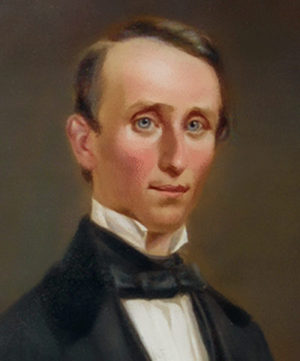
Like many of predominantly Nordic racial stock, Walker was something of a loner. He never drank or smoked, and the one romance of his life was cut short by his belle’s death in a cholera epidemic in 1848. Instead, as a youth, Walker “hit the books,” graduating summa cum laude from a Nashville college in 1845. Then it was off to the University of Pennsylvania medical school in Philadelphia, where Walker gained his M.D. degree with high honors.
Not content with just what he’d learned at the then top-ranked medical school in the country, Walker embarked for Europe to study at the Old World’s great medical teaching institutions. After brief stays in Edinburgh, Paris, and Heidelberg, where he also studied languages, the Tennessean came home to Nashville — to watch in shock as his mother wasted away and died of cholera, despite all his efforts to save her.
This blow not only shattered Walker’s confidence in the medical knowledge of the era — it also shattered the young physician’s assumptions about bourgeois security. Walker opted for the daring life, for experiencing whatever the world could give him.
Against his father’s bitter opposition, Walker began studying for a law degree. In a year and a half he passed his bar examination with distinction. Now he had two areas of expertise: medicine and law — at age 24. Still searching for more experience, Walker took the stagecoach south to New Orleans. There he became the editor of an antislavery newspaper, the Crescent. One of his close co-workers on the staff of the Crescent was a budding young writer named Walt Whitman.
Unlike the businessmen of this Deep South center of the cotton trade, Walker clearly saw the insidious and growing dangers which Negro slavery posed for America as a White nation. But although the Crescent’s circulation soared under his guidance, Walker felt unable to make any headway against the vested interests in slavery. In 1850 the doctor-lawyer-editor from Tennessee moved on — to San Francisco.
As a college student in Nashville, Walker had studied the great epics of Homer, and he always remembered the high praise the poet gave to Achilles: “He was a speaker of words / And a doer of deeds.” This, the Greek aristocratic ideal, now came to fruition in the life of William Walker. America had just annexed the Southwest from Mexico. Walker resolved to invade the northwestern part of what was left of Mexico and annex it himself.
Utterly bereft of military experience (other than his college reading of Caesar’s De Bello Gallico), William Walker drew on his only resource: his will. For three years in San Francisco he studied military books, talked with officers (and with soldiers of fortune, of whom there were many in San Francisco, then a frontier town), and read all the newspapers he could get his hands on, in order to keep up on world events.
By fall of 1853 Walker was ready to invade Baja (or Lower) California. He had collected a grand total of 45 men (!) for the task, got them on an old sailing ship loaded with food and arms, and by a ruse managed to sail out of San Francisco harbor under the nose of the authorities. (The Neutrality Act prohibited U.S. citizens from waging private war on foreign countries.)
The Lilliputian force landed at La Paz, near the southern tip of the Baja California peninsula, with only token opposition from the local Mexicans. The true opposition would come from Walker’s own men, many of whom had joined the expedition more for plunder and whoring than for soldiering, and from a fiercely inhospitable desert environment. But the five-foot-five, self-made “colonel” soon proved his mettle: he marched his men over hundreds of miles of sand and arid sierras, shooting would-be deserters and warning the faint-hearted.
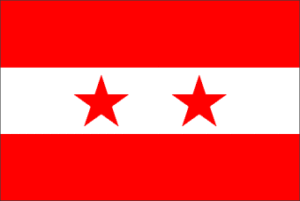
By the time Walker’s platoon-size army hit the first Mexican garrison town it was a disciplined, stout-hearted fighting unit. The local militia fled, and the Republic of Lower California and Sonora was proclaimed, William Walker, President.
Though the new republic lasted only seven months, Walker’s performance was remarkable and typical of his later actions in Nicaragua. When Federal troops in San Francisco seized his supply ships, Walker made do without. When Mexican troops and snipers counterattacked, Walker dug in. It comes as no surprise in view of his background that the new President ordered medical and hygiene reforms in his domain and that he gave the area a constitution. Walker also strictly banned raping and pillaging, as well as the shooting of prisoners — three mainstays of Mexican military life.
Walker returned to San Francisco in May 1854 to face charges for violation of the Neutrality Act. The two-fisted port populace welcomed him as a hero, and a sympathetic jury acquitted Walker of all charges. One juror, mistaking Walker’s intentions, thought that the Tennessean’s only crime had been “trying to civilize the Greasers.”
Nicaragua
Exactly one year after his acquittal, William Walker and another army — this time of 58 men — landed on the Pacific coast of Nicaragua. By now famous around the world, Walker seemed the embodiment of the indomitable Nordic American spirit. A newspaper in Münster, Germany, told its readers:
“The bold advance guard of the American people in Nicaragua, General Walker, has a most typically American personality: clever, determined to the point of recklessness, ruthless, tough, and energetic to a degree seldom found in other nations. Walker seems born to dictate to the soft and spineless Spanish-American population.”
While the German newspaper was correct in saying Walker would “dictate” to the Spanish and Mestizo populace of Nicaragua, it left out the most significant point: Walker’s plan to colonize the country with Anglo-Saxon Americans. Walker had not come as a mere “filibuster” (in the 19th-century meaning of “plunderer”), but rather to assert the right of a superior race to ownership of the land.
In his The War in Nicaragua, published in 1860, Walker himself wrote:
“That which some ignorantly call ‘filibusterism’ is not the offspring of hasty passion or ill-regulated desire; it is the fruit of the sure, unerring instincts which act in accordance with laws as old as creation. They are but drivellers who speak of establishing fixed relations between the pure White American race, as it exists in the United States, and the mixed Hispano-Indian race, as it exists in Mexico and Central America, without the employment of force. The history of the world presents no utopian vision of an inferior race yielding meekly and peacefully to the controlling influence of a superior people.”
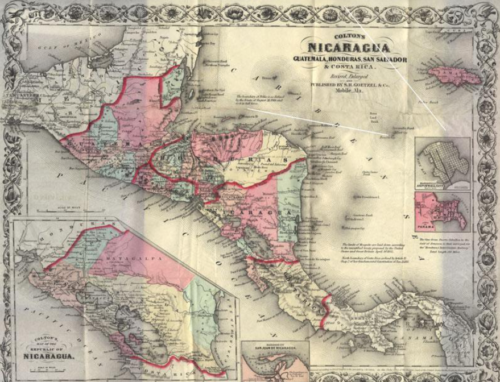
Racially, Nicaragua has always been an overwhelmingly Indian and Mestizo country, with a mere aristocratic sprinkling of European blood, mostly Spanish and German. In addition, a number of Blacks were settled by England in the eastern lowlands of the so-called Mosquito Coast.
In 1811 the general Latin American revolt against Spain reached Nicaragua, touching off an unending series of civil wars and coups which has dragged on until the present. At first Nicaragua fought only against Spain, but then it took on its Central American neighbors. Finally Nicaragua’s internal provinces, as well as her social classes, came into open conflict with one another.
In June 1855 more than four decades of anarchy and chaos were interrupted by the appearance of new blood from the North. Landing at the invitation of a left-wing group among the country’s feuding factions, Walker and his 58 men began an amazing campaign which, by the end of the year, made William Walker the ruler of Nicaragua.
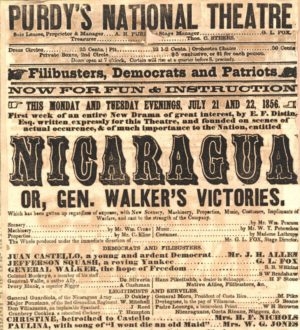
Though their numbers were small, Walker’s troops were handpicked. Many were veterans of the Mexican War, and they were armed with Mississippi rifles, a Colt revolver on each hip, and deadly Bowie knives. Walker kept discipline strict and drilled his men constantly.
But beyond their leadership, training, and experience, Walker’s men had one huge advantage over the Indian and Mestizo troops of Nicaragua: they were willing to actually close with the enemy and kill him. The whole idea of combat was foreign to the local troops: As often as not, by the time the Mestizo armies got close enough to clash, one or both sides broke and ran. Units received incredibly poor training, their officers were incompetent or worse, and the favorite tactic seems to have been fleeing into town, holing up inside the fort or a church, and daring the enemy to attack. The only occasions on which machismo was displayed was when prisoners were captured: They were always brutally tortured and then slaughtered, their remains usually being thrown into the river or down a well.
Everything the Mestizo armies were not, Walker’s men were. They shot well, they stood their ground, they closed for the kill, and if they captured a town prisoners and civilians were spared. The latter point, especially, led to the enemy’s surrender. By December 1855, all of Nicaragua had been pacified. After six months of Walker’s rule, he was elected President of Nicaragua on July 12, 1856.
Nemeses
Before William Walker began a series of governmental reforms reminiscent of his Baja California days, virtually nothing functioned in Nicaragua. There were no public services, such as sanitation, mail delivery, or schools. The only smoothly running bit of infrastructure in Nicaragua was Cornelius Vanderbilt’s Accessory Transit Company.
When gold was discovered in California in 1849 the whole world began clamoring for a quick sea route west to the Promised Land, and Nicaragua was the natural choice as a place to cross the Central American isthmus: in the San Juan River and Lake Nicaragua, nature has already provided a water route across more than three-quarters of the country. Only about ten miles of land separate the western shores of Lake Nicaragua from the Pacific Ocean, and here the U.S. railroad tycoon Cornelius Vanderbilt built the only truly serviceable coach road in Nicaragua, to ferry passengers from the lake ships to his vessels waiting on the Pacific shore. With the vast profits Vanderbilt made from his monopoly on inter-ocean traffic in the 1850s, the New York capitalist (worth over $100,000,000 at his height) financed a program whose aim was to buy up all the good land in Nicaragua.
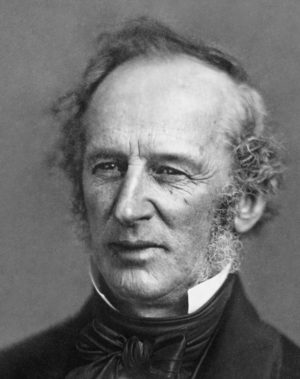
This was, of course, at complete cross-purposes with President Walker’s design to open Nicaragua to U.S. colonists — and not merely to one American “fat cat” interested only in exploiting cheap Indian farm labor. Walker allied himself with two officers of the Accessory Transit Company, Cornelius Garrison and Charles Morgan, to wrest control of the company from Vanderbilt. Garrison and Morgan provided Walker with critically needed cash for government and army expenditures, and in return the Nicaraguan President seized the Accessory Transit Company on the grounds of charter violations and signed it over to the two officers.
Needless to say, this made Cornelius Vanderbilt into Walker’s implacable enemy. Between the Wall Street magnate’s further scheming and the betrayal of Walker’s armed forces by a Jewish officer, the Tennessean’s fate was sealed.
But Walker’s dream lived on for almost another year, until May 1, 1857. Thousands of Americans responded to the efforts of Walker’s stateside recruiting agents and came to settle and farm in Nicaragua, or to serve in the Tennessean’s army. However, many thousands of others were intercepted by the U.S. Navy and turned back. With the growing hostility between the pro-slavery and anti-slavery factions in the United States, Vanderbilt found it easy to persuade the politicians of the Northern states that Walker, despite his anti-slavery record with the New Orleans Crescent, was planning to bring Nicaragua into the Union as a slave state. They preferred instead to keep Nicaragua out altogether.
Vanderbilt then began scheming with Nicaragua’s neighbors to invade Walker’s domain and depose him. But with an army of about 1,200 Whites Walker fought off a whole coalition of invaders from El Salvador, Costa Rica, Honduras, and Guatemala. One point in his favor was the traditional hatred which the various Central American nations felt for each other, despite their nearly identical racial and cultural roots. Only on the rarest of occasions did rival commanders consent to join forces to attack the norte americano’s men, and even then the Mestizo armies usually melted into the bushes at some decisive moment.
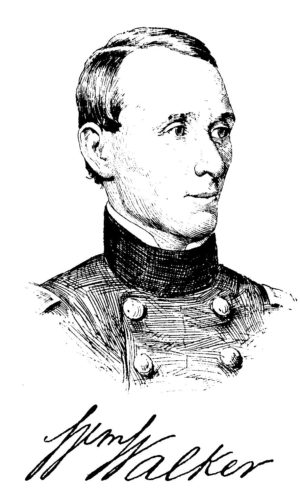
Walker’s rule, and with it the success of the American colonization effort, seemed assured. A close friend of Walker, William Wells, wrote confidently in his book, Walker’s Expedition to Nicaragua:
“That the effete and decadent descendants of the early Spanish colonists and their Indian servants must succumb and give place to the superior activity and intelligence of the Anglo-Saxon, none who have lived in Central America or Mexico will dispute. ‘Manifest Destiny’ is no longer a myth for paragraphists and enthusiasts; the tide of American population, stayed on the shores of the Pacific, seeks new channels; and already the advancing step of the blue-eyed race is heard among the plains and valleys of Central America.
“The power of the press; public opinion; Government vigilance; absurd bugbears of malaria and deathly miasmas; distance; dangers and trials; are alike impotent to prevent the southward march of our people.
“The fiat has gone forth; and as was the case with Florida, Texas, and California, it is only a question of time. With an enlightened and courageous policy on the part of the American Government, a solid front presented against European interference in the affairs of this continent [a reference specifically to British attempts to seize and colonize with Blacks a large section of Nicaragua’s Mosquito Coast], and a rigid enforcement of the Monroe Doctrine, we may look cheerfully and hopefully to the speedy accomplishment of American rule in Central America.”
But what was speedily accomplished instead was the will of Cornelius Vanderbilt. He bankrolled a five-nation invading force, and set up a bogus Nicaraguan “government-in-exile” in neighboring Honduras. The U.S. and British Navies, each acting to protect its government’s separate interests from the threat posed by White rule in Nicaragua, shut off all of Walker’s supplies and sent American recruits back to the States in chains. Nevertheless, under the personal leadership of “the gray-eyed man of destiny,” the American colonist forces continued to prevail.
Walker’s Waterloo came at the town of Rivas. After months of fierce fighting against up to 18,000 enemy soldiers, the Tennessean’s army dwindled to under 500 men, many of whom were mercenaries. What was left of his men and supplies Walker concentrated outside Rivas. One night, while out reconnoitering, he left his camp under the supervision of a certain Colonel Schlessinger, a soldier of fortune whom the men intensely hated. Looking back on the disaster that followed, William Wells wrote:
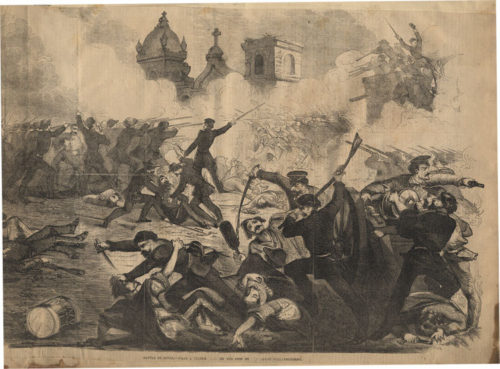
“The appointment of Schlessinger to this command was in every way a most unfortunate one. A Jew, he was of a capricious, violent, and despotic nature. . . . At a quarter past two o’clock, one of the women who had been captured in the morning complained of being sick, whereupon the Colonel, in a freak of liberality, let the whole squad go. But it proved to be a fatal folly, for in less than three-quarters of an hour a picket-guard ran in crying, ‘The Greasers are coming!’
“This sudden alarm threw the whole camp into confusion, and none seemed so entirely bewildered and panic-stricken as Schlessinger himself. His cheeks turned pale, his knees smote together; it seemed impossible for him to compose himself.” (Walker’s Expedition to Nicaragua, p. 301.)
Schlessinger fled. As he ran off into the bush, he shrieked a few garbled commands which a Dutch mercenary company misinterpreted to mean, “Follow me!” And follow they did, Walker’s force was crippled by the desertion of its temporary commanding officer and by the loss of the Dutch contingent, and it suffered heavy casualties in the ensuing battle.
After the losses at Rivas the war only lasted a few more months. Schlessinger, at least, was caught and court-martialed for desertion. But when sentenced to death, he broke his officer’s word of honor and fled Nicaragua. As for Walker’s government, it collapsed and was replaced by Cornelius Vanderbilt’s puppet regime.
On May 1, 1857, William Walker surrendered to Commander Charles Davis of the American sloop of war St. Mary. He and hundreds of his men were eventually transported back to the United States. Fearing for their lives, thousands of White colonists packed up and sailed back as well.
Back in the United States, Walker immediately raised another force. Late in 1857 he was on his way back to Nicaragua, but the Buchanan administration in Washington cut short this second expedition. Though Walker managed to slip out of New Orleans harbor, he was intercepted by a U.S. Navy warship as he was landing in Nicaragua and was returned to the States again.
While he was gathering forces for one last try in Central America, he wrote a remarkable book (composed, like Caesar’s De Bello Gallico, in the third person) called The War in Nicaragua. Even Walker’s enemies praised its honesty and accuracy.
Walker bided his time until the summer of 1860, when with a force weak even by his standards he invaded Honduras. Quickly boxed in by overwhelming native forces, he surrendered to a certain Commander Salmon of the British Royal Navy. Salmon promised the American safe conduct home, but then, on the pretext that Walker was a Nicaraguan citizen, turned him over to agents of Honduras in the pay of the Nicaraguan government. On September 12, 1860, at age 36, William Walker was killed by a Mestizo firing squad.
Walker’s unmarked grave has long since been lost, but for a time just after his death there were efforts to bring his body back to Nashville. The Honduran government resisted, and the efforts came to nothing. The unmarked grave is, at least, an appropriate symbol of the death of a forgotten dream.
“Whom the gods love, they make to die young,” said Menander. Because he died in his prime the Tennessean was spared the sight of Nicaragua reverting to its accustomed squalor, and he was not forced to watch his White countrymen slaughter each other over “states’ rights” and the status of the Negro in the Civil War.
Walker was a far-seeing warrior and statesman born out of his time, a stranger in an era where White racial interests were coming increasingly under the hammer of capitalistic and commercial forces. But a future generation will remember William Walker and what he tried to do. As the Vikings said:
One thing I know
That always lasts:
The fame of dead men’s deeds.
* * *
Source: National Vanguard tabloid, No. 85, 1982; reprinted in The Best of Attack! and National Vanguard Tabloid, ed. Kevin Alfred Strom (Arlington, Virginia: National Vanguard Books, 1984), pp. 214–16; transcribed by Anthony Collins



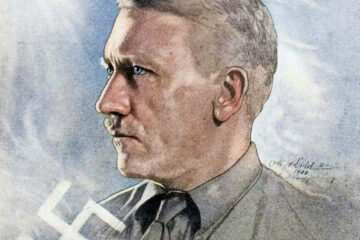
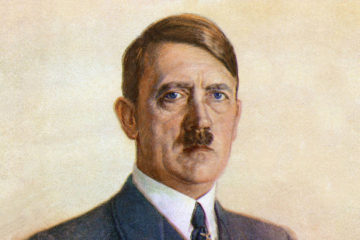
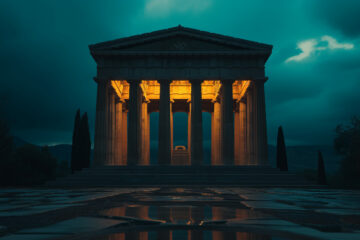
Amazing story! It reminds me of the unfortunate attempt by the French King to massively populate French Guiana with White settlers, in the 18 th century. This attempt, known as the “Expedition of Choiseul”(named after the King’s minister who planned it), was made in the year 1763. It involved the settlement of French Guiana with 13 000 White French men, women and children of the finest racial stock: mainly of Alsacian and Normand origin. It ended in an absolute disaster: total lack of preparation(no housing, no food supplies of any kind), tropical diseases and mass starvation wiped out over half of the settlers in a matter of months… If the settlement had been carefully prepared, with about 1000 settlers coming over to French Guiana every year, the White colonization attempt… Read more »
To think, Anglo-America could have annexed some Latino-States, and America could have had a much shorter southern border.